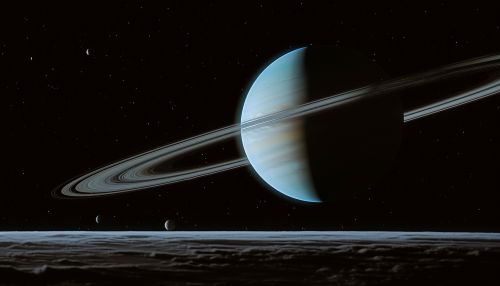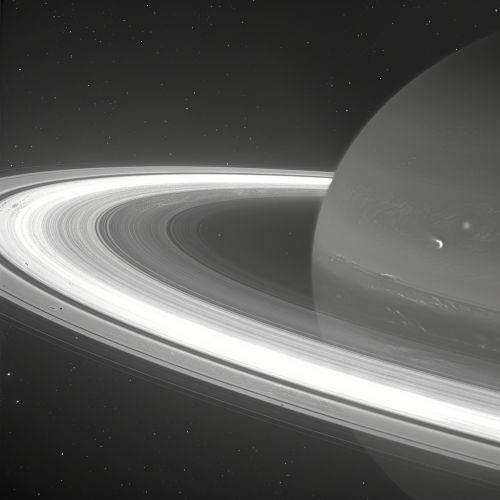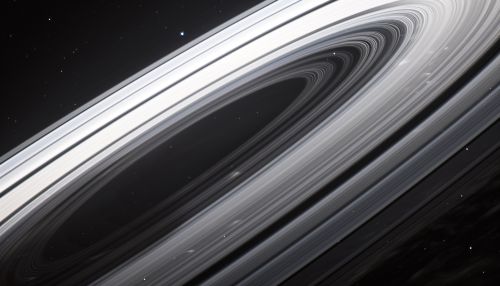Uranus' Rings
Discovery and Structure
Uranus, the seventh planet from the Sun, was discovered by Sir William Herschel in 1781. However, the planet's complex ring system was not discovered until much later, in 1977. The discovery of Uranus' Rings was somewhat accidental, as astronomers James L. Elliot, Edward W. Dunham, and Douglas J. Mink were not directly observing the planet, but were studying the atmosphere of Uranus by watching a star, SAO 158687, pass behind it. The dimming of the star at certain points led to the realization that Uranus was encircled by rings.


The ring system of Uranus is a complex structure composed of thirteen distinct rings. These rings are labeled alphabetically in the order of their discovery. The rings are composed primarily of extremely dark particles, which range in size from micrometers to a fraction of a meter. The rings of Uranus are distinctly different from those of other giant planets, in that they are narrow and dark. The albedo of the rings' particles is very low, indicating that they absorb rather than reflect most of the sunlight that reaches them.
Composition and Origin
The exact composition of the rings of Uranus is not known, but they are likely made up of water ice mixed with some dark radiation-processed organics. The rings' low temperature of about 77 Kelvin (-320 degrees Fahrenheit) suggests that they contain a large amount of water ice. The dark color of the rings comes from the radiation-processed organics, which are complex carbon-bearing molecules.
The origin of Uranus' rings is still a topic of research, but it is believed that they are probably the result of a collision between several of Uranus' moons or other celestial bodies in the Uranian system. The debris from these impacts then spread out into a thin, flat disk to form the rings.
Observation and Exploration
The rings of Uranus have been observed on multiple occasions by a variety of spacecraft and ground-based telescopes. The first detailed images of the rings came from the Voyager 2 spacecraft, which flew by Uranus in 1986. These images revealed the rings to be thin and dark, with varying levels of opacity.
More recently, the Hubble Space Telescope and the Keck Observatory have provided high-resolution images of the rings, revealing more about their structure and composition. These observations have shown that the rings are not static, but are constantly changing and evolving.
Significance and Impact
The discovery and subsequent study of the rings of Uranus have had a significant impact on our understanding of the solar system. The rings have provided valuable insights into the processes that shape the planetary systems and have helped scientists to understand the dynamics and evolution of our own solar system.
The rings of Uranus also have a significant cultural impact. They have been the subject of numerous works of science fiction and have inspired countless works of art and literature.


